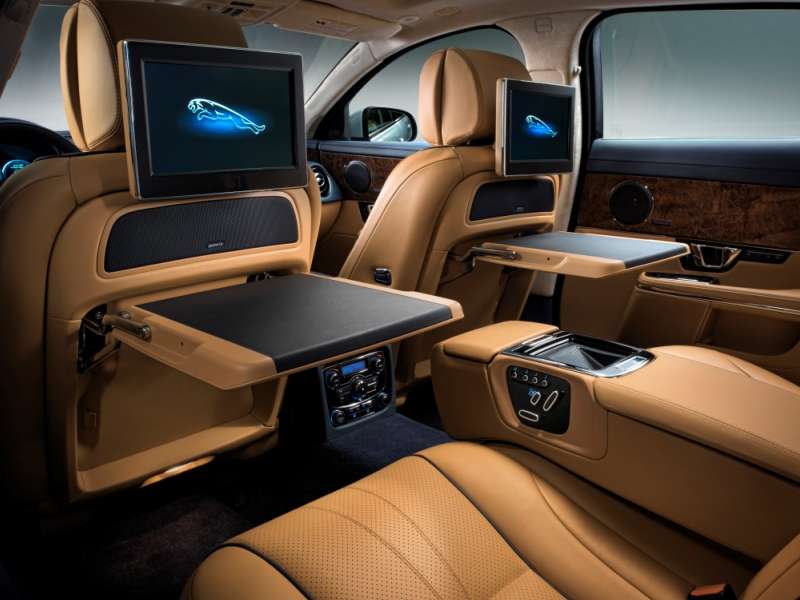Recent Articles
Popular Makes
Body Types
2014 Jaguar XJL Portfolio AWD Road Test And Review
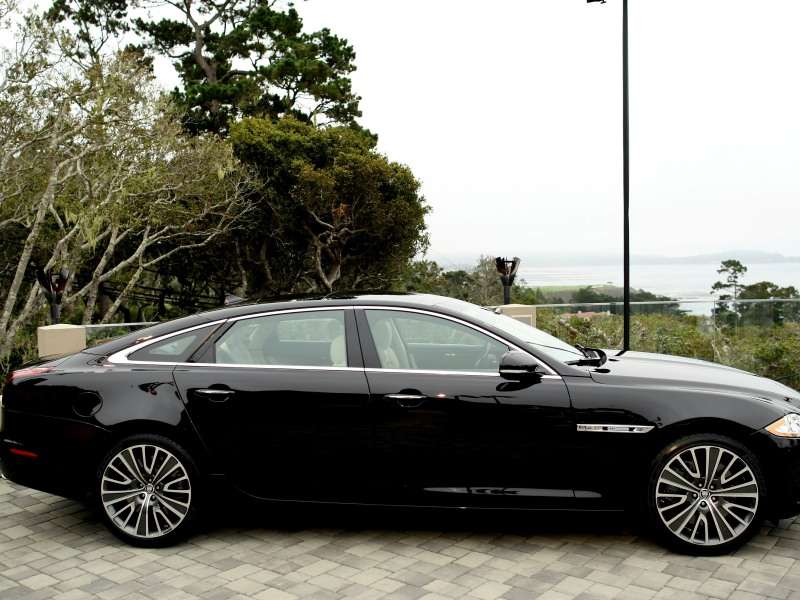
The adjectives sleek, lithe, responsive, and graceful all apply in equal measure to Jaguar’s flagship sedan. Another word applies just as well; although we’re not so sure the management team at Jaguar intended it in quite the fashion it does so. This word is exclusive. Yes, the Jaguar is expensive and yes, the XJ something only a few privileged motorists will ever be capable of affording.
But there’s another reason the word exclusive applies to the XJ.
Despite its speed and handling, the big Jaguar typically brings up the rear in sales races with its chief competitors. Consider this; in 2013, Jaguar sold 16,952 cars in the U.S. (this includes all of its models, XF, XJ, XK, and F-Type). During the same period, Mercedes-Benz sold 13,303 S-Class sedans. In other words, Mercedes sold almost as many S-Class models as Jaguar sold cars—period.
And, Jaguar sales were up 41 percent overall for the year!
For the record, Jaguar sold 5,434 copies of the XJ in 2013.
Of course, what is bad news for the sales team at Jaguar can be good news for you if you’re looking for something not seen every day. Trust us—you will most assuredly not see very many other Jaguar XJ sedans on the road with you if you choose to drive one of these cars.
And frankly, it’s really not a bad choice.
2014 Jaguar XJL Portfolio AWD Road Test And Review: Models And Pricing
For the 2014 model year, Jaguar is offering its range-topping sedan in four variants (XJ, long-wheelbase XJL, high performance XJ Supercharged, and ultra high-performance XJR). The XJR replaces 2013’s Supersport models. The base Jaguar XJ starts at $74,200. The all-wheel drive version of that car starts at $77,700. The long-wheelbase XJL Portfolio starts at $81,200, while the all-wheel drive version of this model starts at $84,700. The XJ Supercharged starts at $90,600, while the XJL Supercharged starts at $93,600. Pricing for the 2014 Jaguar XJR starts at $116,000, while the XJR Long Wheelbase commands a $119,000 base price. To each of the above prices, Jaguar adds an $895destination and delivery charge.
Standard equipment on the base Jaguar XJ includes a set of nineteen-inch alloy wheels, an adaptive suspension system with self-leveling capability, driver-adjustable steering and throttle settings, front and rear parking sensor arrays, a rearview camera monitoring system, automatic windshield wipers, automatic bi-xenon headlights and LED taillights, auto-dimming interior and exterior rear-view mirrors, a power operated trunk lid, a panoramic sunroof with retractable sunshades, and keyless entry with pushbutton start.
The XJ also boasts soft-close doors, a dual-zone automatic climate control system, and a set of heated eight-way power adjustable front seats. You’ll also find memory settings for the driver’s seat and the heated power adjustable tilt-and-telescoping steering wheel. The XJ’s rear seats are heated as well.
An eight-inch touchscreen system provides the user interface for all multimedia features. It also permits interactivity with the navigation system. There is Bluetooth phone connectivity and audio streaming, along with voice activation for most features, along with a 14-speaker Meridian audio system. This supports a CD player, satellite and HD radio receivers, a hard disc drive digital music storage solution, and a USB port.
The Portfolio trim package adds ventilation and 16-way adjustability to the front seats along with massage functions and passenger seat memory settings. A dual-zone automatic climate control system is provided for the rear seats, along with ventilation. There is also a simulated suede headliner, as well as vanity mirrors, and sunshades in the doors for rear passengers.
To all of the above, the XJ and XJL Supercharged trims adds a 470-horsepower supercharged V8, along with a more aggressive suspension system with twenty-inch alloy wheels and performance tires. It also picks up a twenty-speaker Meridian audio system.
The new XJR and XJR Long Wheelbase comes with all of the above plus a 550 horsepower supercharged V8 engine, XJR twenty-inch wheels, an even more dynamic suspension setup, a quad-tip exhaust system, a higher top-speed limiter, XJR exclusive exterior and interior trim, and 14-way sport seats.
The as tested price of our 2014 XJL Portfolio model was $101,545.
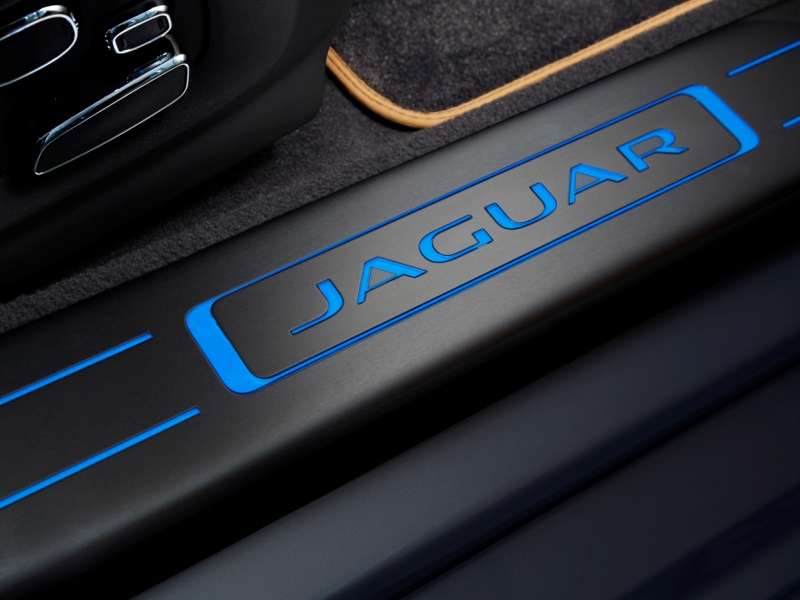
2014 Jaguar XJL Portfolio AWD Road Test And Review: Design
When the current iteration of the Jaguar XJ was introduced in 2009, it represented a complete departure from the styling language previously defining the model for some 41 years. This is particularly significant, as the 1968 Jaguar XJ was the last Jaguar sedan whose design had the input of Jaguar’s founder, Sir William Lyons.
Still, the new design, penned by Jaguar director of Design Ian Callum, is highly distinctive and looks like nothing else on the road (OK save the XJ’s little sister, the XF). While the lower half off the car is bold and muscular in design, the roofline is almost delicate in comparison, and tapers to the sloping rear end of the Jaguar. This gives the car the appearance of being heavy in the front, but light and sleek in the rear.
The large mesh grille, which is nicely counterpointed by the slim, almost feline-looking headlights, refers back to Jaguar’s racing heritage. The size of the grille also hints at the vast reserves of power residing in the engine compartment.
If you look closely, you’ll note the windshield flows upward into the roof and the rear window appears to wrap around the car. This makes the roof appear to float, while its panoramic glass top admits daylight to create a light and airy environment.
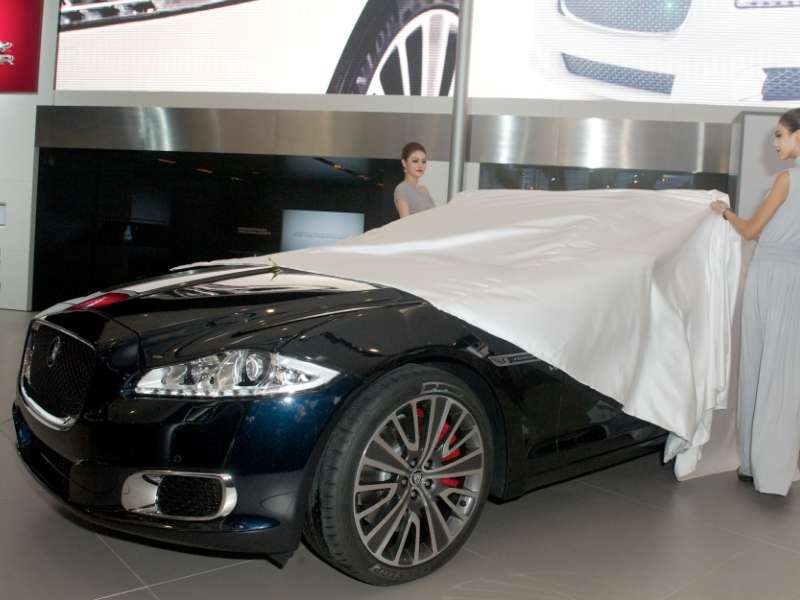
2014 Jaguar XJL Portfolio AWD Road Test And Review: Features And Controls
The instrument panel sits relatively low in the XJ, while a sweeping wraparound wood treatment runs into the doors from the base of the windscreen. The contrast produces a very unique design treatment for the passenger compartment.
Occupying a place of honor in the center of the dash is the analog clock, which is of course, de rigueur for cars in this category. The dash also houses an eight-inch touchscreen interface for climate, navigation, telephony, and entertainment functions. All of these can also be operated by voice.
Getting back to the instrument panel, the XJ uses a virtual instrumentation setup displayed on a 12.3-inch high definition screen. Next to it, the start/stop button pulses like a heartbeat until it is pressed to start the engine. When the powerplant is fired, the Jaguar’s round gearshift dial rises from the center console.
A number of optional features are available for the big Jaguar; among these are smart cruise control, forward collision alert, a heated windshield, and a 26-speaker audio system, featuring three rearward-facing speakers in each front seatback and Conversation Assist. This uses microphones to channel passengers' voices through the audio system speakers, mixing music and speech volume for more comfortable conversation.
New for 2014, are leather-lined tray tables for rear seat passengers (replacing the wood ones from previous model years), a rear seat entertainment system with 10-inch monitors, and individually reclining rear seats. The positioning of all four seats can also be controlled from the touchscreen.
Here’s the thing though, as ultra-modern as all of that sounds, the Jaguar’s interior is wholly reflective of the traditions of fine luxury. Fine leather hides adorn the seats, simulated suede graces the headliner, and rich wood veneers finish the look in grand style. It’s just all combined to achieve a thoroughly modern appearance. Warm and friendly, it’s organic in a way the cars offered to compete with the Jaguar simply can’t approach.
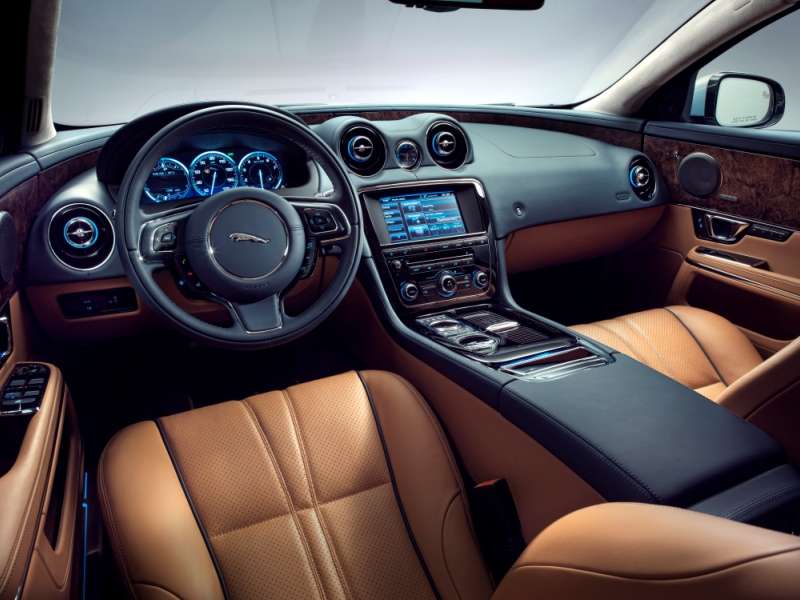
2014 Jaguar XJL Portfolio AWD Road Test And Review: Comfort And Cargo
As you might well imagine, the comfort of the Jaguar’s interior is exceptional. With multi-positional seats for both the front and rear occupants, the XJ offers its passengers the ability to tailor seating to their bodies. Further, all four seats can be had with both heat and ventilation. Separate dual zone automatic climate control systems for both front and rear passengers are another plus.
Additionally, with options like worktables for the front seatbacks, a video entertainment system with headphones, sunshades in the rear doors and one for the rear window, anyone in the Jaguar XJ has to try to be uncomfortable. The car isn’t going to induce discomfort on its own. As a show of its earnestness, the Jaguar XJ’s doors actually close themselves; all you have to do is gently pull them up to the doorframe.
The usual array of storage options is present and accounted for as well, although the Jaguar’s door pockets aren’t exactly commodious, nor are they configured to handle bottles or cups. There is a pair of cupholders in the center console for front-seat occupants and the rear armrest contains a pair for people riding in the back seat. The rear armrest also contains a nice sized storage compartment. The glovebox however, is pretty well consumed by the owner’s manual, but there is additional storage under the center armrest between the front seats.
Legroom up front is excellent; rear seat passengers have adequate, if not exactly abundant legroom—even in the long wheelbase models. The rear seats in our test XJ Portfolio slide fore and aft, as well as recline. They were also heated and ventilated in addition to offering footrests. That sleek roofline eats into headroom somewhat, but not so much as to incite claustrophobia. The trunk is about average sized for a car in this class at 15.2 cubic feet.
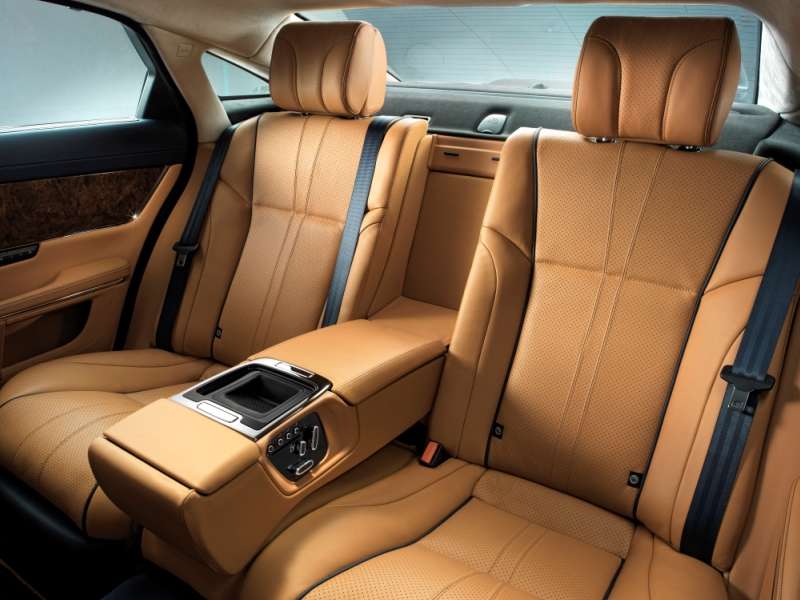
2014 Jaguar XJL Portfolio AWD Road Test And Review: Safety Technology
First, the alphabet soup; ABS, DSC (stability control), CBC (cornering brake control), EBD (electronic brake force distribution), ETC (electronic traction control), and ACC (automated cruise control) are offered for the 2014 Jaguar XJ.
There is also blind spot monitoring, along with smart windshield wipers, a rear view camera system, parking sensors, tire pressure monitoring, understeer control, engine drag torque control, advanced emergency brake assist (bundled with automated cruise control), two-stage airbags for the driver and the front passenger, side curtain airbags, and anti-whiplash front seat structures.
Neither NHTSA nor the IIHS has crash tested the Jaguar XJ.
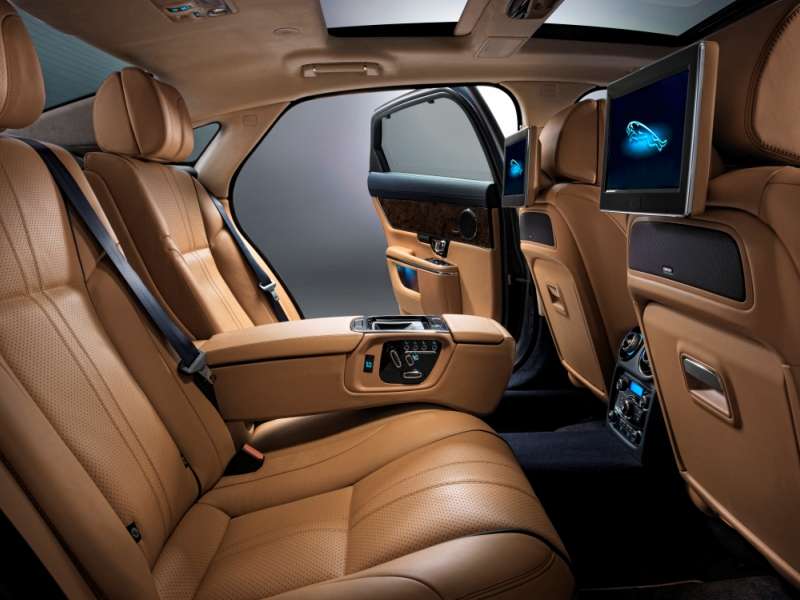
2014 Jaguar XJL Portfolio AWD Road Test And Review: Engines And Fuel Economy
The big news for 2014 is the replacement of the Jaguar’s base V8 engine with a supercharged V6. The powerplant displaces 3.0-liters and produces 340 horsepower and 332 ft-lbs of torque. The engine is mated to an eight-speed automatic transmission and rear-drive in its standard powertrain configuration. Our XJL Portfolio model featured all-wheel drive.
The V6 is direct injected, employs high compression and independent variable cam timing to achieve its superior horsepower numbers. It is also fitted with Jaguar’s intelligent start/stop function (fitted to the V8 engine as well), which shuts the engine down at traffic signals and etc. We found it to be a bit rougher than you’d expect from a Jaguar in operation. Restarting the engine with the function was considerably more jarring than starting the engine manually from rest with the start button.
It does help to save fuel though. Fuel economy is rated at 16 in the city, 24 on the highway, and 19 combined with the all-wheel drive configuration, however we averaged some 20 miles per gallon. The rear drive configuration is good for 18 city, 27 highway and 21 combined.
XJ Supercharged models get a 5.0-liter supercharged V8 good for 470 horsepower and 424 ft-lbs of torque. The XJR uses a more aggressively tuned version of the V8 to deliver 550 horsepower and 502 ft-lbs of torque. These engines are mated to an eight-speed automatic as well, but all-wheel drive is not offered with them. Fuel economy is the same for both versions of the blown V8; 15 in the city, 23 on the highway, and 18 combined.
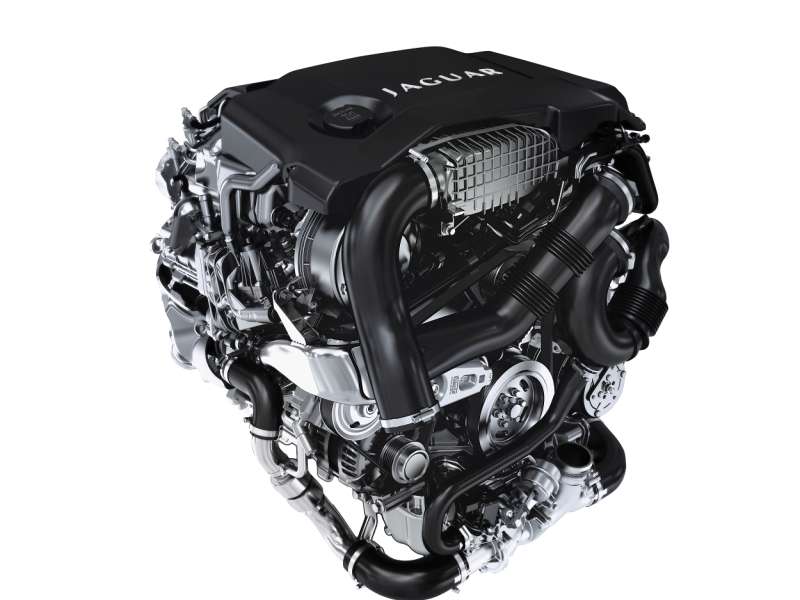
2014 Jaguar XJL Portfolio AWD Road Test And Review: Driving Impressions
Much of the Jaguar’s prowess on the road is owed to its lightweight aluminum structure. Our test XJ felt very light on its feet, despite its size and the weight of the luxury equipment and all-wheel drive system componentry it carries around.
Gliding along the highway at speed in the big Jaguar is one of motoring’s more sublime pleasures. Our XJL Portfolio 3.0 AWD consumed miles in a thoroughly graceful manner. Smooth, quiet, competent, and seemingly capable of infinite motion, this car likes running, and it likes running fast. The V6 engine delivers more than adequate power, in fact but for one instance you’d be hard pressed to know it was a V6 at all. The V6 has a tendency to drone on the highway, but other than that, it’s very Jaguar-like.
In city driving, the big Jaguar pulled away from traffic signals smoothly and with decided authority. Unfazed by rough pavement, the suspension system soaked up irregularities without upsetting the passenger compartment while still conveying information about the nature of the road’s surface. In fast cornering maneuvers, body roll was minimal, as our long wheelbase XJ clawed its way through corners like a car half its size.
Put the transmission in S (for sport) and press the checkered flag button behind the gear selector and suddenly your ever so genteel luxury sedan becomes a sport sedan of the highest order. Acceleration becomes sharper, gear changes more crisp, the steering becomes livelier and before you know it, you’re running more quickly than you ever imagined you could in a car this size.
We found the all-wheel drive system seamless in operation, and truly appreciated the additional confidence it offered during the monsoon-like rains we endured on what passes for northern California winter days. The system is programmed to deliver the majority of the engine’s torque to the rear wheels (30/70) to preserve the rear drive feel so coveted by involved drivers.
However, Jaguar’s Instinctive All Wheel Drive system is also capable of dividing torque output 50/50 between the front and rear wheels when it is required to mitigate wheel slip. Working in concert with the dynamic stability control and ABS systems, the Jaguar’s powertrain is also capable of apportioning torque from side to side, as well as braking individual wheels in an effort to keep it on the pavement in inclement conditions.
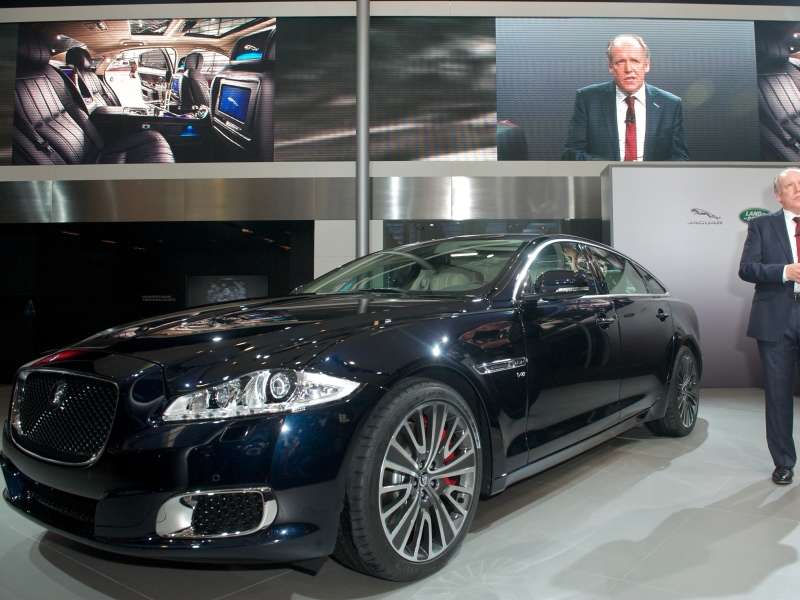
2014 Jaguar XJL Portfolio AWD Road Test And Review: Final Thoughts
OK, so that’s the good news. Alas, there is bad news too. For so many years, reliability of Jaguar cars was so low, even people who know nothing about cars, know their rep. Thing is, during Jaguar’s period of ownership by Ford, those demons were pretty well exorcised.
However, perception has a tendency to lag reality, so most people consider a Jaguar a pretty car that breaks down a lot. This, no doubt, is a factor in the “exclusivity” we referred to at the beginning of this review. Thing is, a consequence of that “exclusivity” is soft resale value.
According to our friends at Kelley Blue Book, a 2012 Jaguar XJ Portfolio equipped similarly to our $101,545 2014 tester (minus all-wheel drive) in excellent condition (pristine, like new, no visible wear and tear) would sell for somewhere around $51,000. Let that drop to good condition (exhibiting normal wear and tear) and you’re looking at $48,900—in just two years.
Of course, there is another way to look at that. You can get a like-new two-year old XJ for just over half price. And, if you don’t care about resale value at all, you’re looking at one of the most beautiful new cars on the road, one hardly anyone else will be driving.
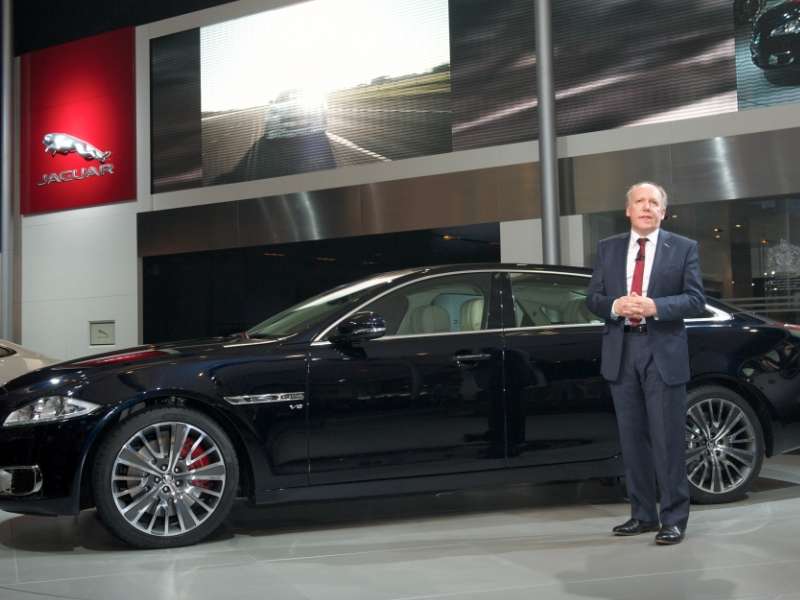
2014 Jaguar XJL Portfolio AWD Road Test And Review: Pros And Cons
Beautiful styling, gorgeous interior, good power, reasonable fuel economy…
V6 drones, soft resale value, rear seat legroom not quite as good as competitors…
